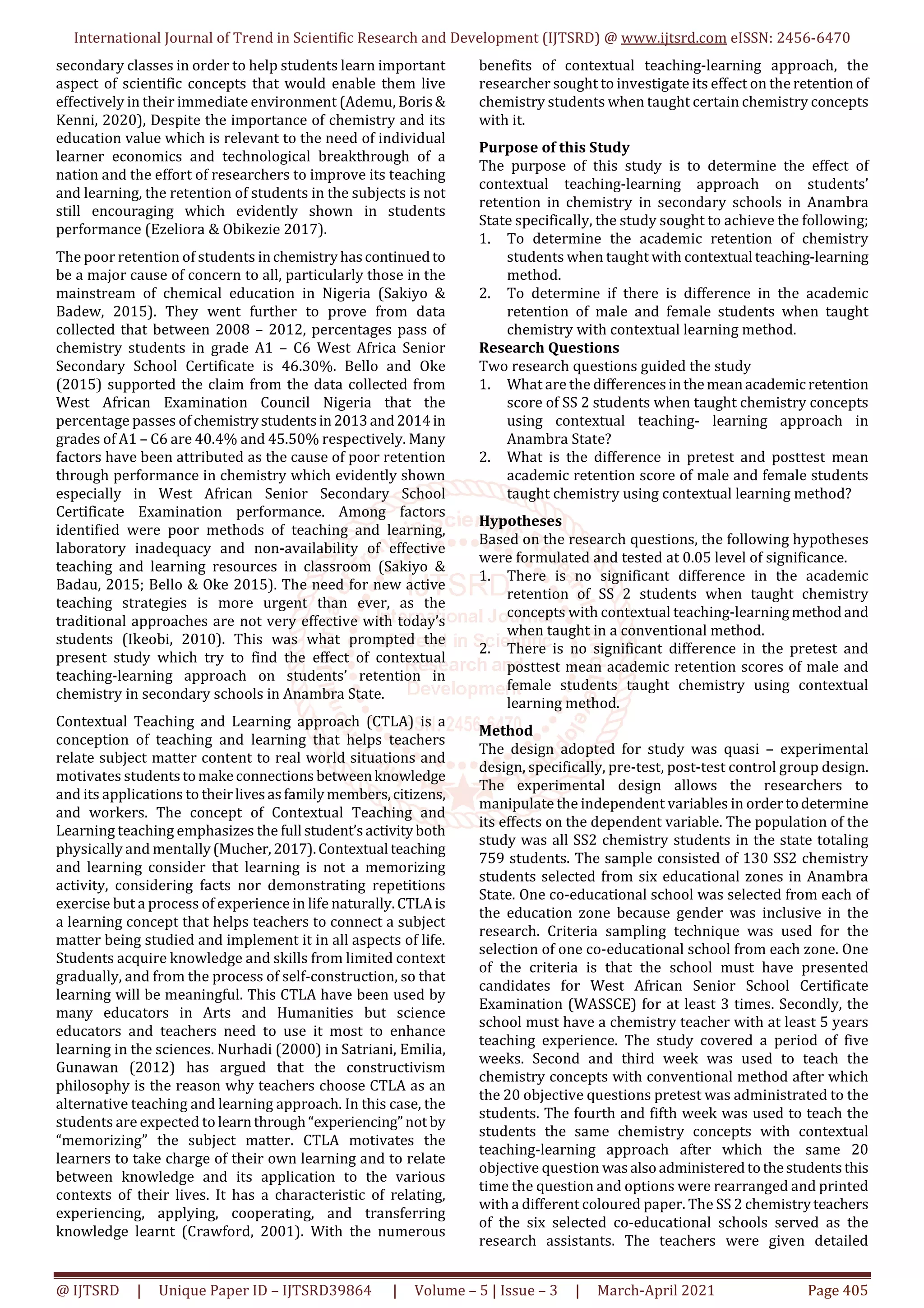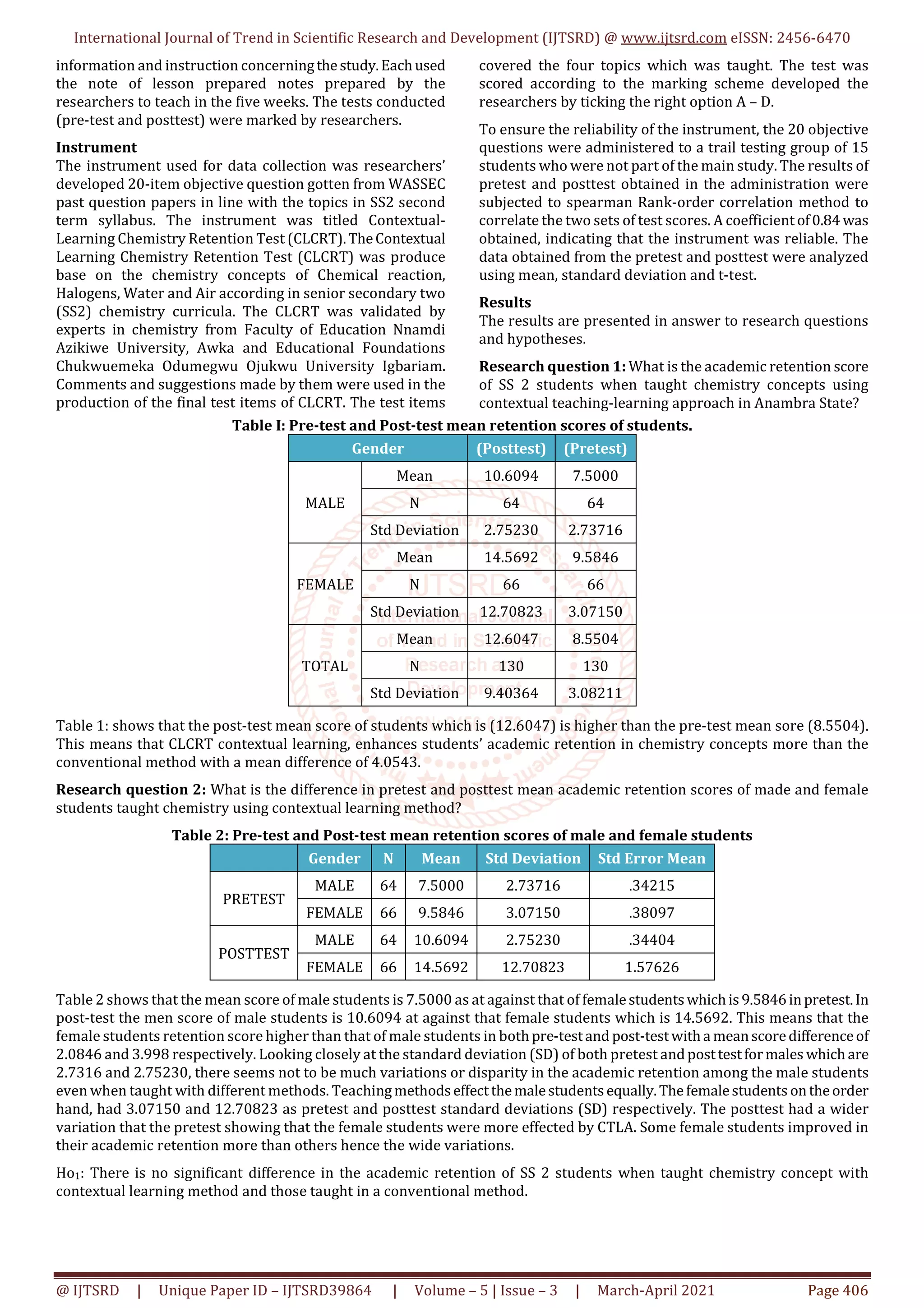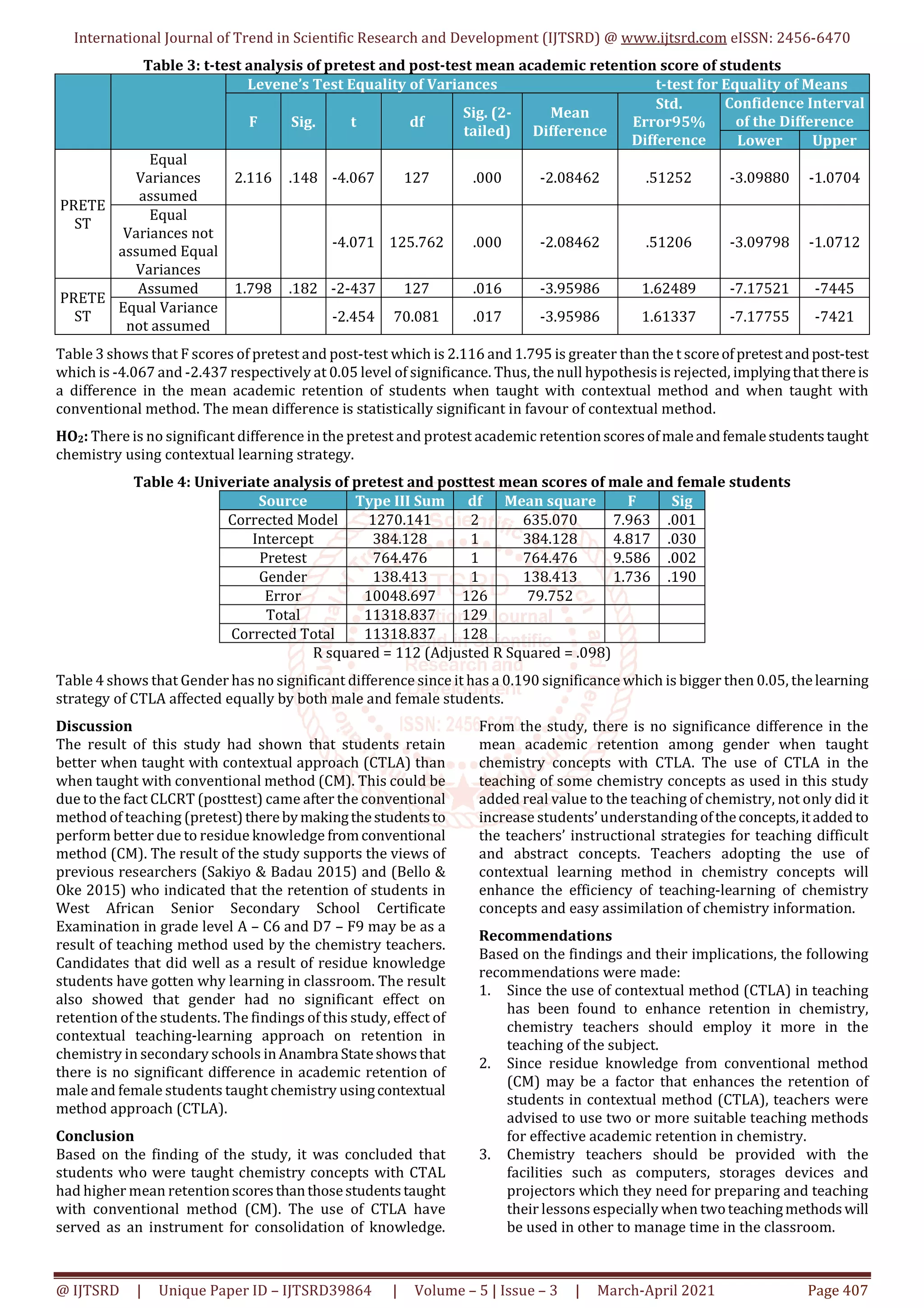The study investigates the effect of the contextual teaching-learning approach (CTLA) on chemistry students' academic retention in secondary schools in Anambra State, Nigeria. Results indicate that CTLA significantly improves retention in chemistry compared to conventional methods, highlighting the need for chemistry teachers to adopt this approach for better student performance. The study involved 130 students and utilized a pre-test, post-test design to analyze retention scores.




![International Journal of Trend in Scientific Research and Development (IJTSRD) @ www.ijtsrd.com eISSN: 2456-6470
@ IJTSRD | Unique Paper ID – IJTSRD39864 | Volume – 5 | Issue – 3 | March-April 2021 Page 408
References
[1] Adanu, A. S Bons, O. O & Kenni. A. N (2013) Trends in
students achievement in senior school certificate
examination (SSCE) in Chemistry between 2008 and
2012. International Journal of Science and research
(IJSR), India 2 (6) 363 – 395. Retrieved from
http//www.ijsr.net on 26 Feb, 2020 at 4:53am
[2] Bello, M. A., & Oke M. G (2015) An apprasial of
candidates achievement in the West African Senior
School Certificate Examination (WASSCE) among
WAEC member countries. WAEC HQ, Accra and Lagos
[3] Crawford, L. M. (2001). Teaching contextually;
Research, rationale and techniques for improving
student motivation and achievement. Texas: CCI
Publishing, Inc
[4] Ezeliora; B. A & Obikezie M. C (2017). The challenges
facing chemistry teachers in the utilization of IC
Packages in instruction. Journal of science education
and allied discipline Vol. 2(1); 51 – 60.
[5] Hashimi, MA (2018) Challenges of educational
Development in Nigeria; Issue of Chemistry Science,
Journal of chemistry and materials Research. Retireved
from http//www.iiste.org on 11 fed, 2020 at 2.14pm
[6] Ikeobi, I. O (2010) Beyond the Stereotype: Thoughts
and reflections on education. Yaba: the CBN press
limited.
[7] Muchtar, M. I. (2008). Contextual teaching and
learning method in studing Arabic. Hunafa: Journal
Studia Islamika. 14(1) 175-188
[8] Okeke, E. A C (2008) Clarification and analysis of
gender concepts. Focus on research, reproductive
health education, and gender sensitive classroom.
Journal of the Science Teachers Association of Nigeria
and STM series, 2, 5 – 8.
[9] Sakiyo, J. & Badau KM (2015) Assessmentofthetrend
of secondary school students’ academic performance
in the science, mathematics and English. Nigeria
Advances in Social Science Research Journal 2 (2) 31 –
37 doi: 10.14738/assrz 22.805.
[10] Ugo, E .A & Akpoghol. T.V (2016) Improving Science,
Technology, Engineering and Mathematics (STEM)
programs in Secondary Schools in Benue State
Nigeria: Challenges and prospects Asia Pacific Journal
of education, arts and science 3 (3) 6 – 16 Retrieved
from www.apjmr: com on 25 fed, 2020 at 2:20pm
[11] UNESCO (2009). UNESCO Institute of statistics paris.
UNESCO Press.](https://image.slidesharecdn.com/69effectofcontextualteaching-learningapproachonstudents-210517045118/75/Effect-of-Contextual-Teaching-Learning-Approach-on-Students-Retention-in-Chemistry-in-Secondary-Schools-in-Anambra-State-5-2048.jpg)